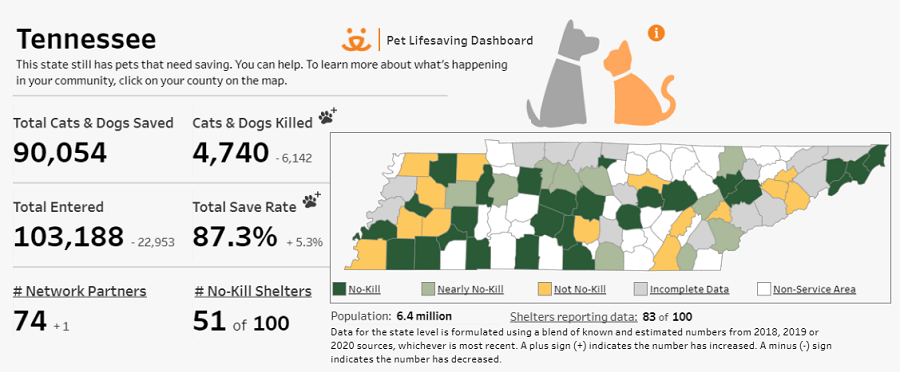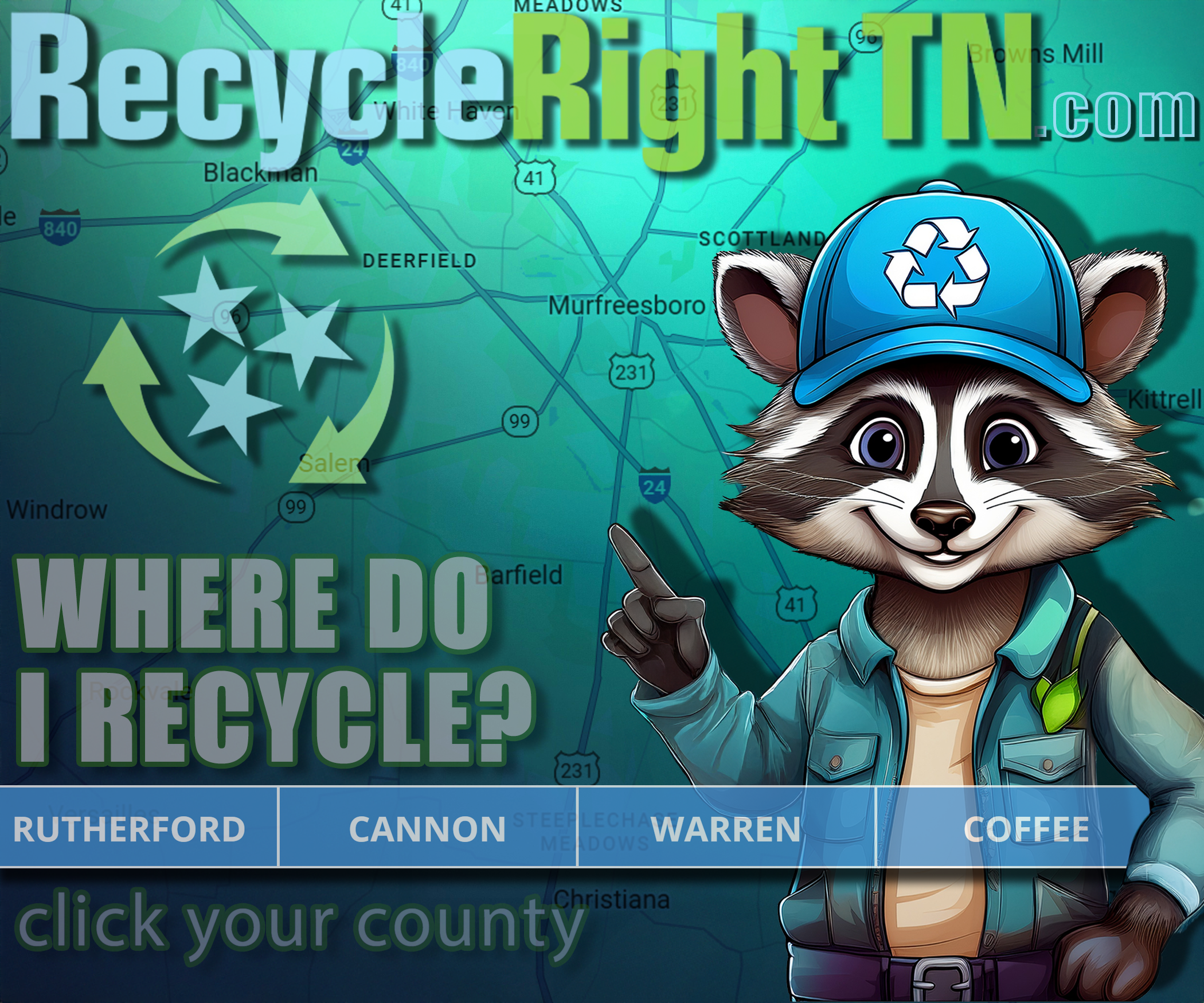Best Friends Animal Society, a leading animal welfare organization, today released its sixth annual pet lifesaving dataset, which gives a national overview of the number of dogs and cats that enter and exit shelters each year.
Best Friends measures shelter lifesaving with a metric called “save rate.” A 90 percent save rate is the nationally recognized benchmark to be considered “no-kill,” factoring that approximately 10 percent of pets who enter shelters have medical or behavioral circumstances that warrant humane euthanasia rather than killing for other reasons, such as lack of space. In 2020, 103,188 dogs and cats entered Tennessee shelters and 90,054 were saved, giving the state an aggregate save rate of 87.27%.
Rutherford County
Specifically in Rutherford County, the most recent data indicates a cat and dog “Save Rate” of 95.1% in 2020. Broken down, 95.06% of cats taken to the Pet Adoption and Welfare Services (PAWS) office were adopted as opposed to being euthanized. When looking at the dogs being saved, the rate came in at 95.33%. Overall, 3.097 cats and 2,614 dogs entered the PAWS office last year.
For Tennessee as a whole, 37.50% of state shelters measured above the 90% benchmark. Those that were below it needed to save 4,740 more healthy or treatable animals to make Tennessee no-kill (a state is considered to be no-kill when every brick-and-mortar shelter serving and/or located within the state has a save rate of 90% or higher).
69% of shelter deaths in 2020 were cats, most of which were outdoor community cats residing in townships with barriers to trap-neuter-vaccinate- return programming. Nationally, community cat programs have created a notable reduction in the number of cats entering shelters, made significant improvements in save rates and provide public health benefits.
By comparison, in 2019 126,141 animals entered state shelters and 103,355 were saved for an aggregate save rate of 81.94%. At the time, 37.04% of shelters were no-kill and those that were below it needed to save 10,882 more animals.
“Over the last few years, we’ve seen lifesaving increase, particularly in more urban areas of the state, as municipal agencies have worked to have effective programs and community support services,” said Angela Rovetto, Senior Strategist - East Region, Best Friends Animal Society. “Some of these agencies such as Memphis Animal Services, Metro Animal Care and Control, Young Williams Animal Center and McKamey Animal Center have developed partnerships with animal welfare organizations and embraced their community members to reach the common goal of saving more community pets’ lives. While there’s still work to be done, especially in helping people and pets in rural areas connect to resources and support, collaboration has been lifesaving.”
To view your and community’s progress, click here.
“This was a monumental year for cats and dogs in America’s shelters,” said Julie Castle, CEO of Best Friends Animal Society. “We saw communities, shelters, and individuals step up for animals in ways we couldn’t have imagined, and now we are closer than ever before to achieving our goal of no-kill by 2025.”
The COVID-19 pandemic impacted this year’s data, as many shelters or services had to partially close or reduce services. Communities and individuals filled that gap through volunteering, fostering and adopting. As a result, fewer pets entered shelters and more lives were saved.
“This year’s progress has been exceptional, from what we have seen with community support and involvement and the lifesaving numbers as a result. It is crucial that we build on this momentum to keep pets out of shelters and in loving homes where they belong. This is how we will get to no-kill,” Castle said.
Nationally, about 347,000 cats and dogs were killed in America’s shelters in 2020, down from 625,000 in 2019. This is the largest yearly reduction in dogs and cats killed in the nation’s shelters (44.5 percent) to date, putting the nation at an 83 percent save rate. Best Friends has the most comprehensive national data on sheltered animals, representing an estimated 93 percent of all sheltered dogs and cats in the country.
"Since we announced our no-kill goal the number of cats and dogs killed in shelters has decreased by 76 percent, down from about 1.5 million in 2016. This is incredible progress, but we must never lose sight that there are still over 950 cats and dogs killed every day just because they do not have a safe place to call home,” Castle said.
For the past six years, Best Friends has spearheaded a one-of-a-kind extensive data collection process that involved coordinated outreach to every shelter in America followed by additional research, data analysis, and technology development. The dataset is the most comprehensive on sheltered animals, based off data directly from shelters, state and local coalitions, government websites, and even FOIA requests. This year, Best Friends launched a new user experience for its pet lifesaving dashboard, which displays the data clearly and further inspires community members through highlighting the areas of greatest need to help homeless pets in their communities.





